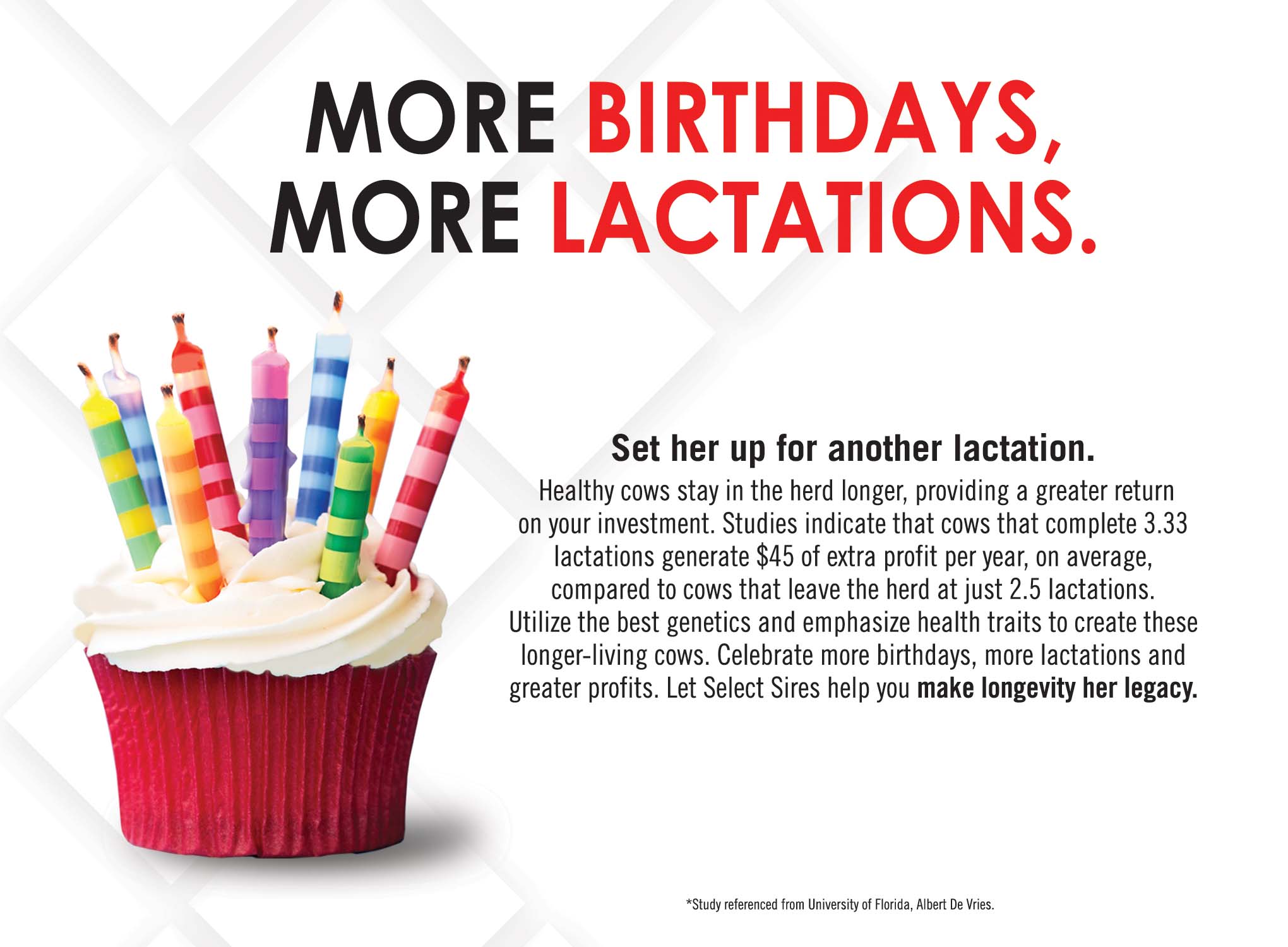
Mystic Valley Dairy is home to 435 lactating cows and 550 youngstock in Sauk City, Wisconsin. The herd makeup is 42 percent first lactation, 22 percent second lactation and 35.3 percent third lactation and greater. Among Breunig’s list of goals,
having a herd of older cows is a primary target. To accomplish this, he emphasizes genetics, specifically health and wellness traits, as well as production and type.
Good tenants protect property and profit
Breunig summarizes two leading advantages to older cows: low cull rate and high production. Because Mystic Valley is leveraging health and wellness genetics combined with balanced type, their cows are thriving well into their third lactation. This
has created unique opportunities for the herd. Each year, they sell 150-180 high-quality replacements that go into production at other dairies. Since 2003, Mystic Valley has sold 2,800 head, making cattle sales a sizeable component of their business
model. Breunig compares this volume to having a complete dispersal seven times over. The second lactation cows are a big part of those dairy sales and why the herd has a lower percentage of second lactation cows.
Mystic Valley’s low cull rate and cow sales go hand-in-hand to deliver substantial return to the dairy’s bottom line. Meanwhile, the high production yields of older cows makes for good tenants in those valuable stalls.
Peak milk production for Mystic Valley’s first lactation cows averages 98 pounds, while the peak for third lactation and greater averages 148 pounds. Breunig and Kevin Jorgensen, Holstein sire analyst for Select Sires Inc. and cattle partner
at Mystic Valley Dairy, work together to develop genetic strategies based on herd reports. Jorgensen says, “Production reports show you that the old cow pen is the barometer for the entire dairy. When the older cows are doing well, the dairy
is doing well.” These greater lactation cows produce more milk and deliver a bigger return on investment.
Another important metric for Breunig and Jorgensen is pounds of solids per cow. With a current herd average of 7.5 pounds, their goal is eight pounds. More solids and greater production efficiency improves income over feed costs (IOFC) and contributes to the financial position of the dairy.
Genetically selecting the right tenant
Mystic Valley’s genetic strategy is designed to take advantage of their unique cattle marketing opportunities. To achieve their desired goals, the selection parameters are index driven with emphasis on Herd Health Profit Dollars™
(HHP$™). The inclusion of udder health traits in HHP$ sets it apart from other indexes. Jorgensen says, “For cows to live longer, they need to be built to resist mastitis and avoid other common ailments.”
Individual expectations, operational goals
Precise genetic goals lead to better outcomes, just like a renter’s contract outlines expectations. As landlords, Breunig and Jorgensen have implemented a progressive genetic strategy so that healthy, longer-living cows occupy the stalls. This comparison
between stalls and real estate allows Mystic Valley to hone in on individual cow performance while also achieving long-term, herd-wide goals.
